Seminar Blogs
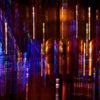
“Our Fascination with Atmosphere” – Mavi Irmak Karademirler
The concept of atmosphere carries a wide range of possibilities within itself despite being difficult to define or analyse in a text. It is a house for the material and the immaterial, visible and the invisible, finite and infinite. Atmosphere circulates, moves, changes surrounds us with despite efforts to capture it. It exposes our obsession…
Read more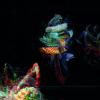
“Episteme? Doxa? Or something in between…” – Elissavet Kardami
John McKenzie and Aneta Stonic’s performance lecture was an introduction to the notion of thought action figures. This new concept was initially contextualized by presenting two different types of knowledge: episteme and doxa. John McKenzie located the origins of epistemic knowledge in Plato’s metaphysical idealism, where the process of abstraction can offer access to a…
Read more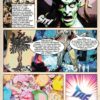
“Transmission in metaphors” – Gido Broers
In their lecture performance, Jon McKenzie and Aneta Stonjic introduced thought-action figures to explain how our thinking and acting are structured in certain figures. The form in which the idea of thought-action figures was presented – a lecture performance – was also an attempt to explore new ways of transferring knowledge, that differ from the…
Read more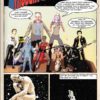
“Yet, another lecture?”- Alexandra Kinevskaya
On the 23d of May 2018, we were invited to the “lecture-performance” by Jon McKenzie and Aneta Stojnic with a peculiar title “Thought-Action Figures”. Prior to lecture, we received preparatory material that consisted of a comic with the same name and some of the philosophical thoughts/quotes from the event. In the beginning of the performance,…
Read more
“The Paradoxes of Post-Conceptual Thinking” – Irene Alcubilla Troughton
In our last session of Transmission in Motion Seminar, we had the chance to assist a performance-lecture given by John McKenzie and Aneta Stojnic based on what was called “thought-action figures”. This proposition (in lack of a better term) was introduced in an attempt to search for a post-conceptual, post-ideational knowledge that could break down…
Read more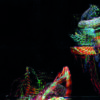
“Transfer of corporeal knowledge ” – Gido Broers
Last week I visited a rehearsal of the performance of WIEK, which was originally created by Boukje Schweigman in 2009. In this performance, three performers move in interaction with a moving object which has the shape of three wings of a mill (see the picture above). This performance will be performed again next month, with…
Read more
“Do we dance with technology?” – Irene Alcubilla Troughton
New lines of scholarship focused on perception in the last years have become preoccupied not only with the influence of the body in this act but also in its essential position for understanding how perception in itself is constituted. Among those, Alva Noe stands as a prominent thinker. In his renown book Action in Perception…
Read more
“Restructuring structuring structure” – Max Peters
Corporeal literacy was the main buzzword of Maaike Bleeker’s lecture, as she discusses how we can rethink the understanding of our bodies, bodily responses and body-mind relationship. The discourse she presents breaks with the dominant Cartesian school of thought, so effectively summarized by his cogito ergo sum adagio. We are not just simply our brains,…
Read more
“Things That Move Us”- Tamalone van Eijnden
During the last session of Transmission in Motion Emilia Barakova and Roos van Berkel gave a workshop on “Expressive Movement as a Universal Language between Humans and Social Robots.” But actually, it was more than the two of them, since they also brought Pleo with them, an animatronic pet dinosaur, which has been used in…
Read more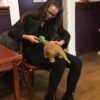
“A beautifully Uncanny & Fruitful Interaction with a Dinosaur” – Elisavet Kardami
Roos van Berkel and Emilia Barakova’s lecture offered a very fresh perspective on the diverse ways that human and robots can interact, but also the affective potential movement regardless of who or what is generating it. What I found particularly fascinating was how the dinosaur robot (PLEO) that the researchers offered to the audience to…
Read more
